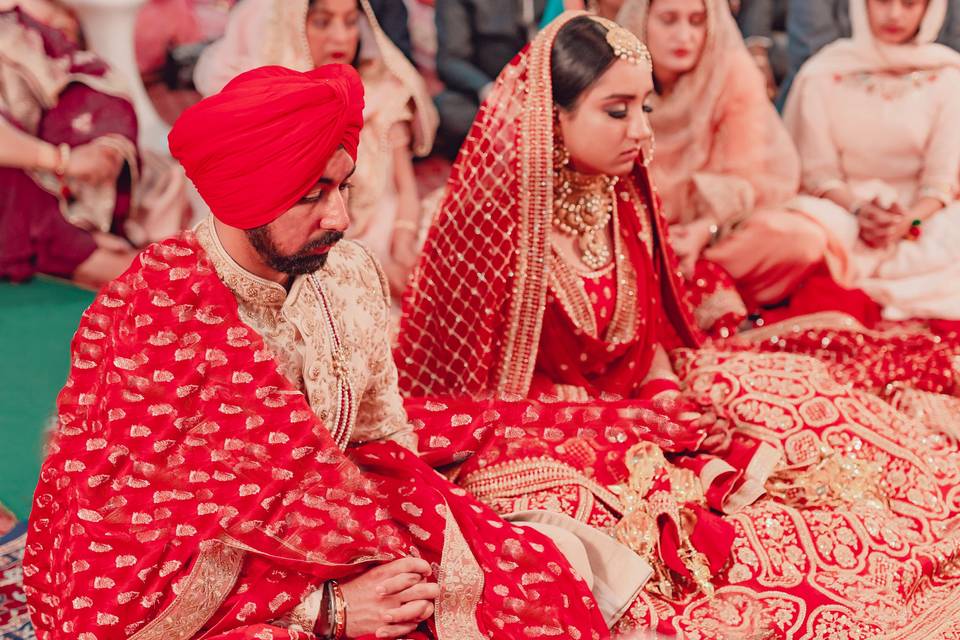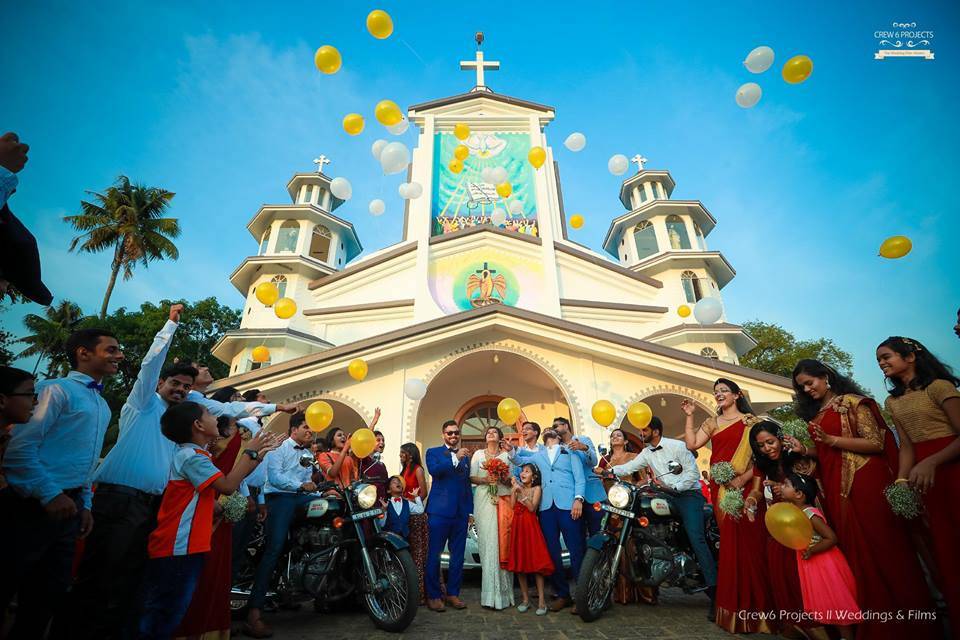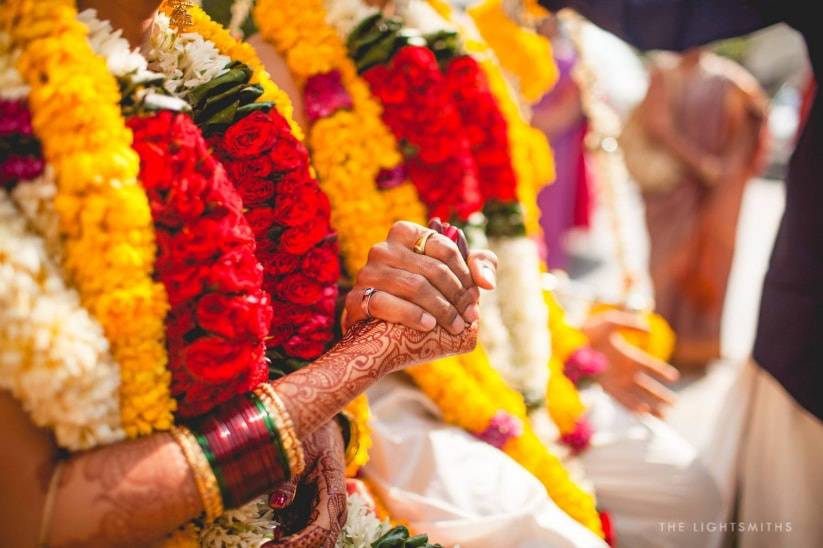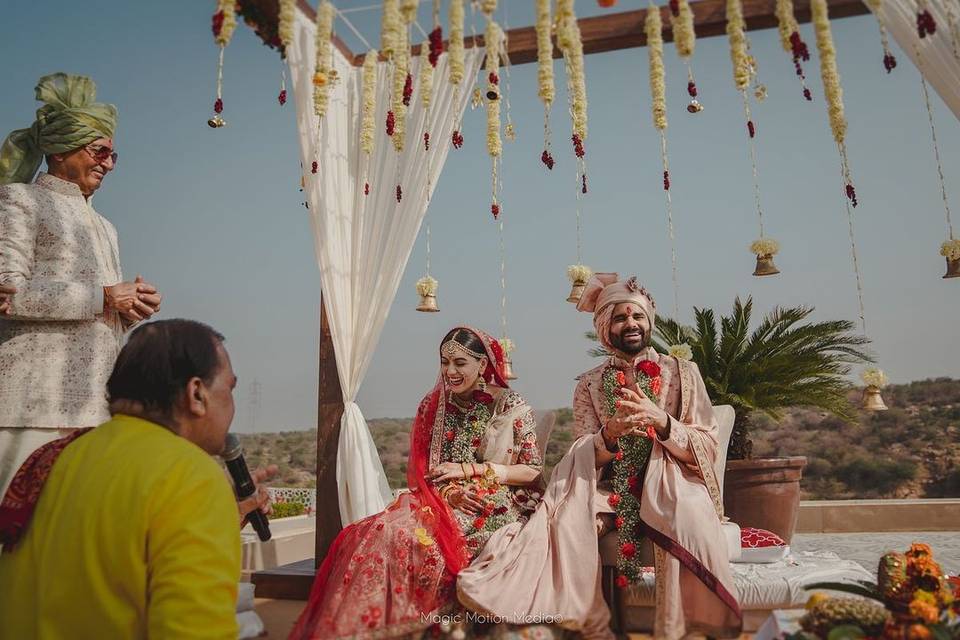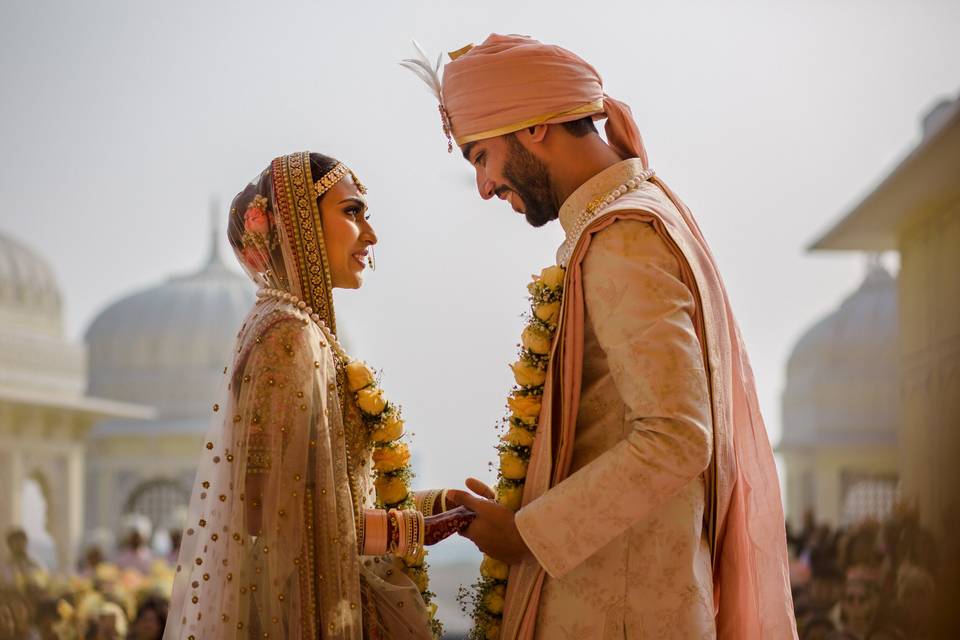Decoding Odia Marriage: the Beauty of Their Traditions & Rituals
Odia marriage functions are not only colourful and fun but also speak of a rich cultural heritage. Here is a detailed piece that will help you decode Odia weddings!
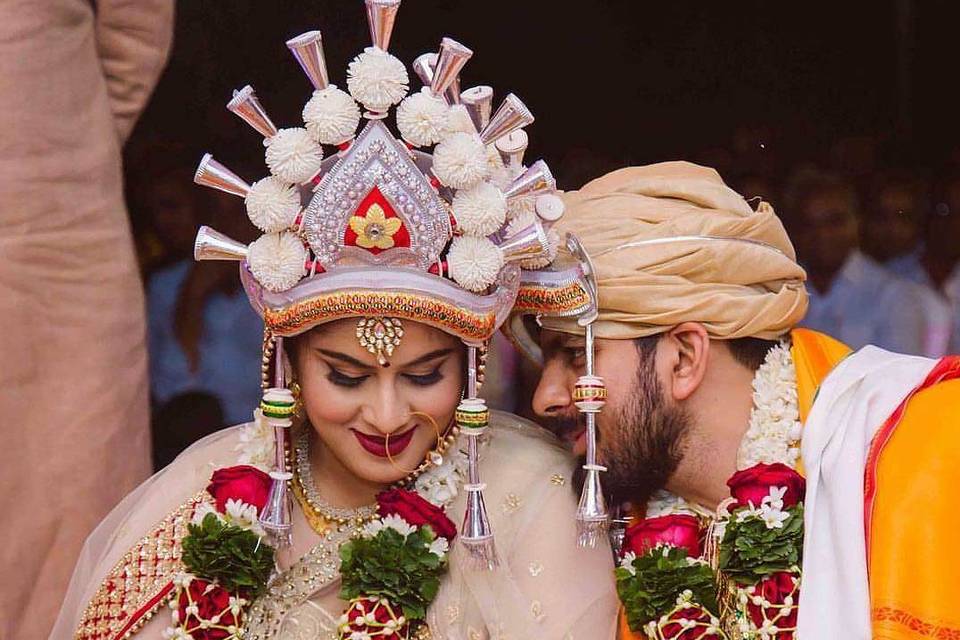
Indian weddings are nothing short of a carnival. Every Indian wedding is made all the more colourful and fun with the different ceremonies that are deeply rooted in the cultures. India is a land of many cultures and that makes every wedding a unique and beautiful one. One such mesmerising wedding is the Odia marriage.
Located on the eastern coast of India along the Bay of Bengal, it is perhaps most famous for its temples and national parks - the Sun Temple of Konark and Jagannath Temple to name a few. Apart from the scenic beaches, it is also known for its rich cultural heritage and history. The Oriya wedding is an alluring ceremony to be a part of or to witness.
To help you understand the culture better, we will help you take a detailed walk through the captivating Odiya marriage. Read on to know about the significant ceremonies and much more that makes an Odia marriage a magnificent celebration.
Pre-wedding Ceremonies
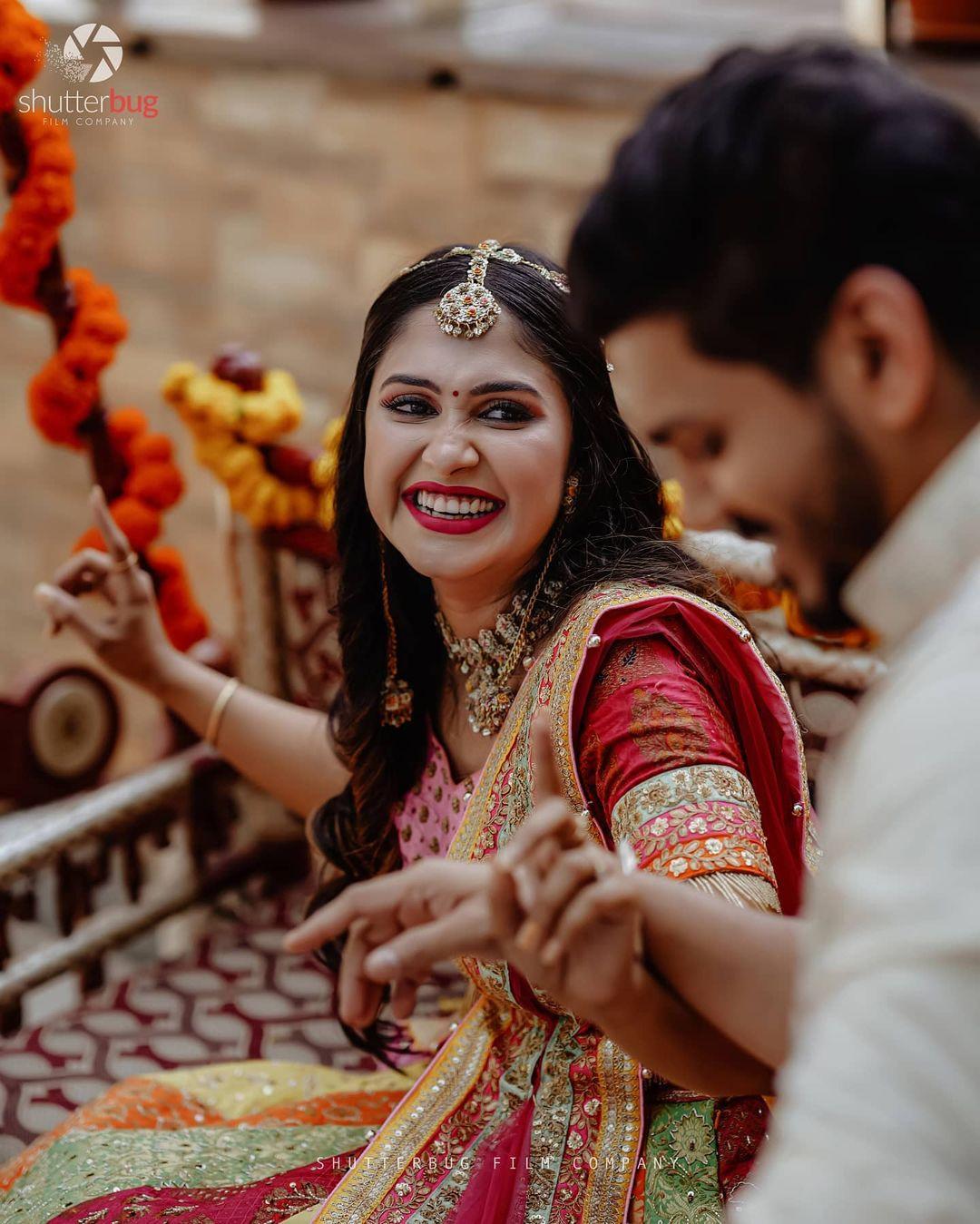
Like most marriages that are arranged among Indians, matches are scouted for through a matchmaker within the same community. Once a suitable match is found, the horoscopes are matched and then the two families meet officially when the horoscopes are matched with satisfactory results. The better the match, the happier will be the couple's married life. The marriage largely depends on the bride and groom's mutual acceptance to each other and to both the families. However, in case of a love marriage - the ways of the meeting might differ!
Nirbandh
Nirbandh is the official engagement ceremony. In a traditional Oriya engagement ceremony, the bride and groom are not present but the elders of the families of both the bride and the groom meet at a temple or at the bride's home to give each other their word. This formal commitment through word of mouth is called Sankalpa. This ritual is also known as teh Vak Nischaya which literally translates to word of mouth. This is followed by the exchange of gifts.
Jayee Anukolo
The beginning of the wedding ceremonies that are to follow is marked by the Jayee Anukolo ceremony. Wedding cards are made and distributed by the families that also mark the official announcement of the wedding. The first card is placed before Lord Jagannath - the supreme deity of the native people of Orissa. This is typically done at the Jagannath Temple at Puri and is known as the Deva Nimantrana.
The second invitation generally goes out to the maternal uncle's families of both the bride and the groom with a betel leaf and a betel nut. This invitation is called the Moula Nimantrana. There is also a ritual where the third invitation is sent to the groom's family by the bride's family and the bride's father along with a few male elders visit the groom's house to personally invite the groom with gifts. This is the Jwain Nimantrana. After this, the families can send out the invitations to the rest of the guests.
Mangan
An Oriya equivalent of Haldi ceremony, the Mangan ceremony is celebrated a day before the wedding preferably in the afternoon where a turmeric paste is applied on the bride or groom's hands and feet by seven married women. One of these seven women must be a sister-in-law of the bride or the groom. After this ceremony, the bride and the groom are bathed in holy water to ward off the evil eye and add to the pre-wedding glow too. This ceremony is celebrated separately at the groom and bride's places but with destination weddings being the norm, this is now done at one time too.
Jairagodo Anukolo
The Jairagodo Anukolo ceremony marks the lighting of the pious flame that is considered auspicious for the wedding. This fire is lit using ghee or oil in the form of havan. The pious fire stays lit till the end of all the ceremonies and rituals.
Diya Mangula Puja
A very significant tradition of the Oriya wedding is the Diya Mangula Puja. Usually done by the local barber's wife, the bride's wedding attire, her jewellery and a box of vermillion is offered to the Goddess to get it blessed for the wedding. This offering in the form of prayers/puja is done at the local temple. In the olden days (even now in fact) the puja is done at the village temple goddess known as the gramadevati. This puja is done to ensure a long and happy married life for the bride.
Nandimukha
Similar to a Bengali wedding ritual, teh Nandimukha puja is conducted in both the bride and groom's families where their respective fathers pray to the ancestors to invoke their blessings on the couple and to ensure a happy married life.
Wedding Ceremony

Barjaatri
Another wedding ritual that is similar to the Bengali wedding is the Barjatri also the Baraat of the Punjabi and Marwari weddings. The groom is accompanied by several members of his family in a jovial procession when he sets off from his house to get married. The bride's family generally sends a vehicle to get the Barjatri to their residence where a traditional aarti is done by the mother of the bride or an elderly female member of the bride's family. A tika/tilak of vermillion paste and unbroken rice is applied on the forehead of the groom to receive him and soon after his feet are washed in coconut water. A concoction of curd, sugar or honey and ghee is fed to him before his heroic entry into the venue.
Baadua Pani Gadhua
Once the groom approaches the mandap, the bride is made aware of his arrival by the females who accompany her and is then immediately taken for her holy bath - Baadua Pani Ghadua, a ceremonial bath to ward off any evil and get her ready for the pious function.
Kanyadaan
Like most Hindu marriages, the Kanyadaan is one of the very first rituals of an Odia marriage ceremony. The groom arrives at the mandap first and then the bride follows suit. The father of the bride then gives away his daughter to the groom and requests him to take good care of her. The groom accepts these responsibilities and pledges for the same commencing the marriage ceremonies in full swing.
Hatha Granthi Fita
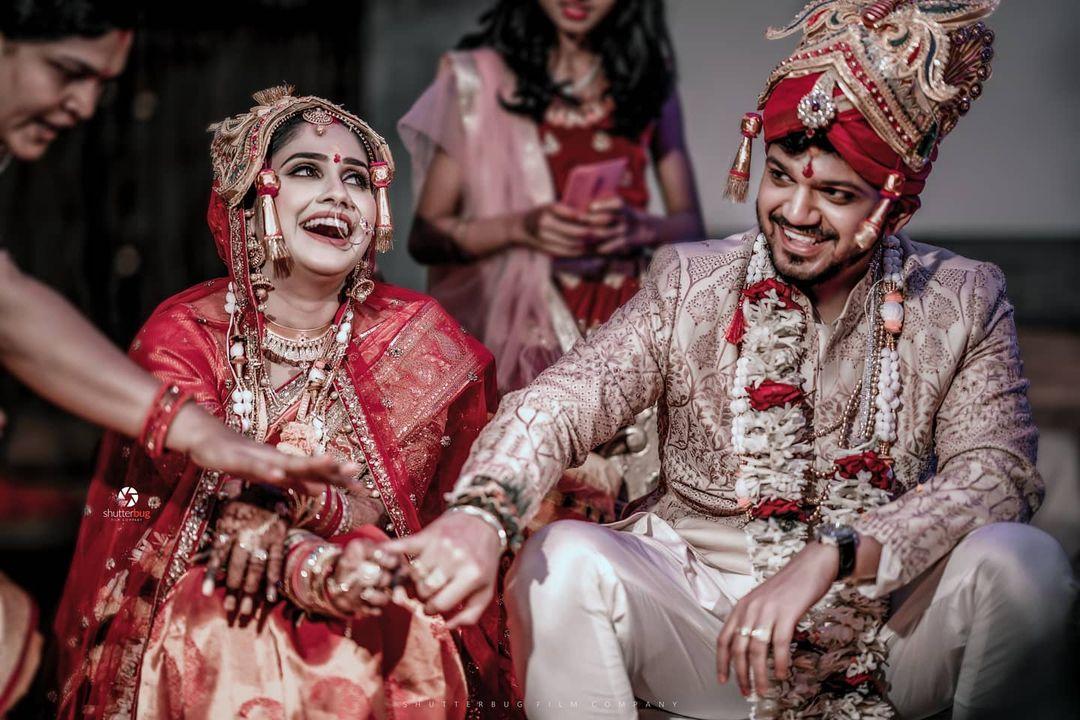
The bride's father then places her hand on the grooms with a garland of mango leaves around it. Mango leaves are considered holy in many hindu rites. This ritual of vows with their hands wrapped in the leafy garland is called the Hatha Granthi Fita and is similar to the Panigrahan ritual in many other Hindu marriages. This marks the next step of the bride in life - transformation from a daughter to a daughter-in-law and a wife. The couple then makes seven rounds of the fire together by holding hands. These seven rounds symbolise seven sacred promises of marriage.
Saptapadi
Seven small piles of rice are made on the ground which is blessed by the priest. These piles represent Saptakil Parwatas or the seven hills that symbolise the hardships that they have to face during their married life. The bride breaks this heaps of rice with her right foot along with the groom by her side and this marks the seven steps of togetherness to begin their journey of a happily ever after. This is the Saptapadi.
Lajahoma
Sala Bidha
The groom's brother in law is also known as the Sala. This fun ritual involves the Sala to punch the groom playfully on the back that is supposed to remind the groom of his duties and commitments towards the bride and that he is answerable to his Sala just in case.
Sindoor Daan

The bride and groom rise up from the wedding stage, go outside to view the Pole Star. After viewing the Polaris, the groom applies vermillion powder to the bride’s hair parting and slips on conch shell bangles on her hands. The wedding is considered to be complete after this ritual.
Post-wedding Ceremonies
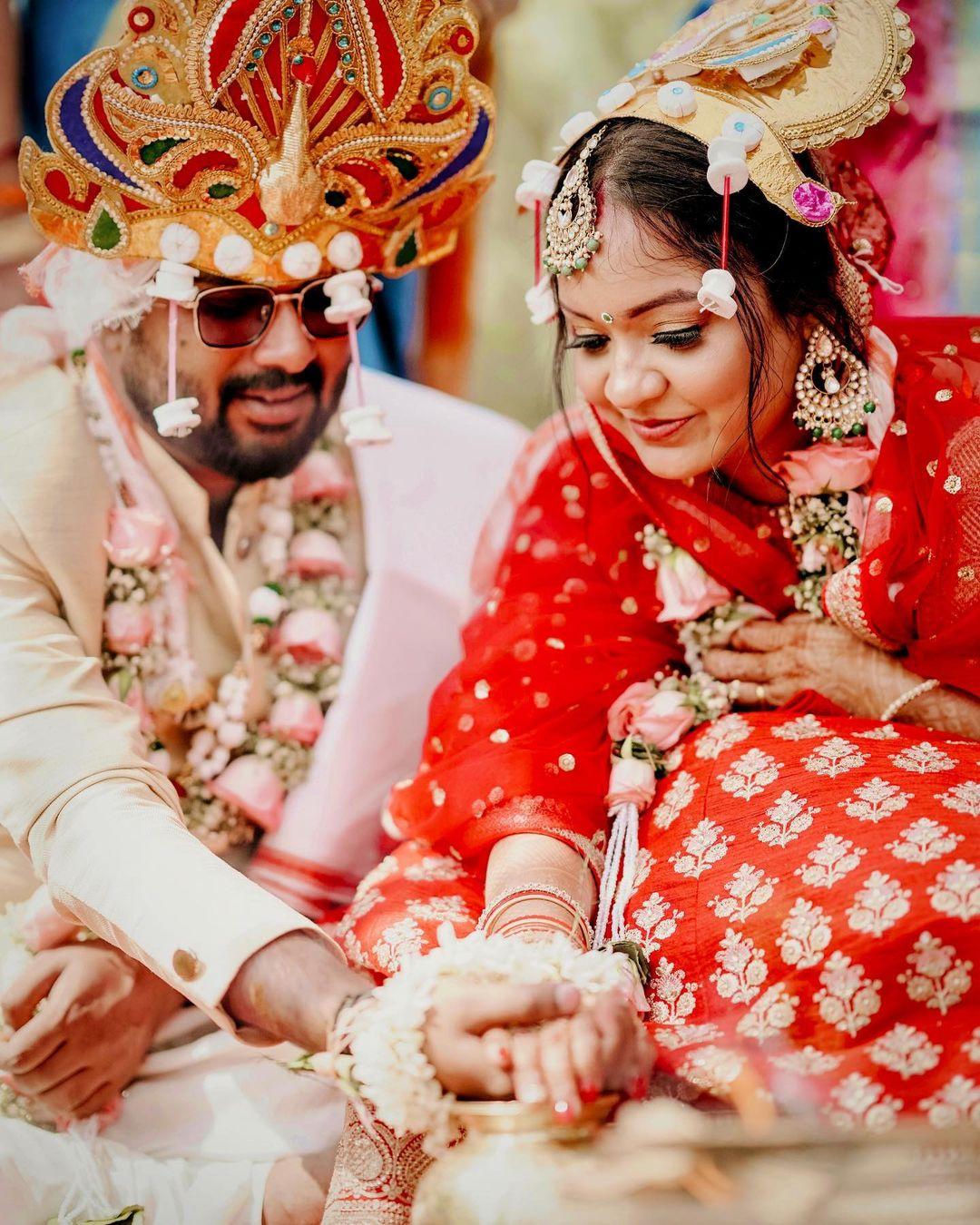
Post-wedding ceremonies are always fun when it comes to Indian weddings. These act like the ice breaker for the bride who comes into a new family especially in case of an arranged marriage where the bride and the groom's family gets a chance to warm up to each other.
Kaduri Khela
After the wedding rituals are over, the couple is seated in a room and made to play games to make them relax. They play with small, white, shiny shells called kaduri and the ritual is literally known as Kaduri Khela. The groom holds them in his closed fist and the bride will try to pry them open. The same is repeated with the bride holding the shells in her fist and groom trying to retrieve them.
Sasu Dahi-Pakhala Khia
After the Kaduri Khela ritual is over, the groom is invited over by his mother-in-law to have some food. According to traditions, he has to sit on the lap of his mother-in-law as she feeds him Pakhala or cooked rice soaked in water with curd along with Baigan poda (mashed grilled eggplants with spices).
Bahuna
As the bride prepares to leave her parental home, her mother sings ‘Bahuna’ songs which describes the pains that she has had to endure to give birth and bring up her daughter. Other female relatives also join her in her lament.
Gruhaprabesha
The bride reaches her husband’s home and is given a warm welcome by her mother-in-law. She is treated as the incarnate of Goddess Laxmi who is to spread joy and prosperity as represented by overturning a pot of rice placed on the threshold with her right foot.
Chauthi/Basara Raati
On the fourth day from the wedding, a puja is performed at the groom’s house where a coconut is roasted. The couple’s room is decorated with fragrant flowers and a glowing oil lamp is placed beside the bed. The couple is fed charu or the roasted coconut. The groom proceeds to the room and the bride follows him with a glass of kesara dudha or saffron infused milk. The couple spends their first night together as husband and wife. As per Oriya traditions, the marriage is considered complete only after consummation.
Asta Mangala
On the eighth day from the wedding, the bride and the groom visits the bride’s paternal home where they are generally welcomed with a grand feast. The couple spends the night together at the bride’s paternal home. This marks the end of all wedding rituals in Oriya traditions.

Image Courtesy: Studio 4
Odia marriage ceremonies are indeed extraordinary celebrations that will leave you awestruck for days. To be a part of the celebrations and to know what comes after what is a stellar feeling, trust us!
If you are going to attend an Odia marriage or have attended one, tell us your favourite or most exciting parts in the comments below.







